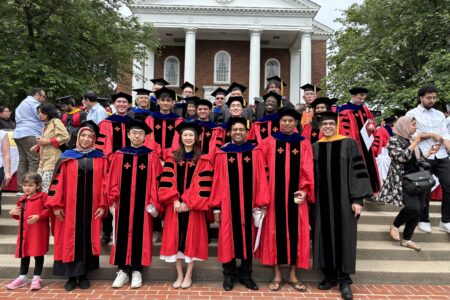Applied economics can be quite handy in everyday decision-making. For instance, a retail store manager might use it to analyse customer buying patterns and inventory, helping them decide which products to stock, when to hold sales, and how to price items to boost profits and satisfy customers. Similarly, an environmental economist studying climate change can use applied economics to assess the costs and benefits of various mitigation strategies, such as carbon taxes or renewable energy subsidies. By quantifying the economic impacts of these policies, they can provide evidence-based recommendations to policymakers.
Strong analytical and quantitative skills are essential to thrive in these roles. That’s where an advanced degree in Applied Economics can make a difference. The University of Maryland offers a Master of Science in Applied Economics through its Department of Economics which also offers bachelor’s and PhD programmes. The overall department is ranked #22 in the United States by US News & WorldReport. The department’s MS in Applied Economics programme is also highly regarded. For the fifth consecutive year, TFE Times has ranked it first in the US among Master of Economics programmes. The ranking is based on assessment of graduate salaries, student qualifications, and employment rates.
Strong placement record
One key advantage of the University of Maryland’s programme is its prime location in the DC metro area. With the university’s main campus just nine miles from downtown Washington, DC, major institutions like the IMF and the World Bank are practically at their doorstep. Being this close leads to greater networking opportunities, which in turn, leads to better job prospects.

The programme stands out for its small class sizes, one-on-one interactions with professors, and ample networking opportunities. Source: University of Maryland
Many students are already employed when they start the programme. Others use the degree to pivot to a new career in economic analysis or to land their first major role after college. Simply being part of the programme can enhance one’s job prospects, helping them secure positions, raises, and promotions before they even graduate.
The department’s robust relationships with employers in the DC area, private firms, and international organisations contribute to its impressive placement record. What’s more, the University of Maryland’s Career Centre organises career fairs and placement events to further support student employability. As a result, over 90% of graduates secure jobs in their field within three months of graduation, landing roles at organisations like Deloitte Consulting, Ernst & Young, Raven Capital, the World Bank, the IMF, and various government agencies worldwide.
A curriculum modelled for success
With a 10-course, 30-credit structure, the MS emphasises empirical skills and real-world applications. It is a solid foundation for future work as an analyst in various sectors, including public, private, and nonprofit. Just ask Fuda Jiang, a graduate now working as a research analyst at the IMF in Washington, DC.
“I enjoyed the evidence-based coursework in our programme,” he says. “The practical examples helped me understand how analysts work in the real world. I’m very happy with my work at the World Bank and IMF. The programme prepared me very well.”

The MS in Applied Economics programme provides rigorous training in economic analysis and applied econometrics, equipping students with sought-after quantitative and empirical skills. Source: University of Maryland
Learning from expert faculty
The department’s reputation attracts high-quality instructors committed to teaching excellence. As such, you’ll learn from renowned economists, many of whom are employed at government agencies, private firms, and NGOs in the Washington, DC, area. These instructors provide intellectual challenge as they run advanced training in quantitative techniques and econometric modelling.
The best part? Small class sizes. There are ample opportunities for one-on-one interactions with professors and peers.
“I was consistently impressed by our professors’ unique teaching methods, extensive knowledge, and willingness to assist students beyond the classroom,” says graduate Pooja Ravi, now transfer pricing analyst at Ernst & Young. “The small class sizes facilitated meaningful one-on-one interactions with the professors, the teaching assistants, and our fellow students, which I greatly valued.”
An affordable option
Another key reason to join this MS is cost. As it’s run by a public institution committed to providing quality education at competitive prices, the programme is significantly less expensive than similar options in the Washington, DC, area.
At US$4,050 per course, it offers a cost advantage compared to comparable programs like Johns Hopkins’s, which charges US$5,400 per course. Over the 10-course programme, this difference amounts to more than US$13,000.
Learn more about University of Maryland.
Follow the University of Maryland on Facebook, X, Instagram, LinkedIn, and YouTube












